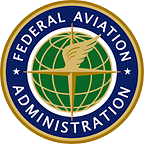How the FAA Weathered a Stormy Summer
How the FAA manages air traffic around pockets of severe weather is always evolving, and following a surplus of summer storms, this year was no exception.
By Daniel Glover, FAA
Severe weather is a fact of life in the National Airspace System (NAS), and the workforce in the FAA’s Air Traffic Services helps keep flights flowing safely and efficiently around the storms. They have been plenty busy on that front this year.
As always, FAA traffic management units in the field worked with the Air Traffic Control System Command Center and airline dispatchers to plan ahead for predictable storms such as weather fronts and hurricanes and to adapt to pop-up thunderstorms. This year, they have done that work while also dealing with challenges posed by the COVID-19 pandemic and changes in domestic travel trends.
“This is something that we go through every year, so certainly we like to think that we learn from that every year, we get better every year,” Air Traffic Services Vice President Jeffrey Vincent said in a recent video about severe weather.
Safety is the top priority when severe weather arises. Mike Porcello, the traffic management officer for the New York District, noted that thunderstorms in particular contain multiple hazards, from ice and hail to downdrafts and lightning.
“It is not an option for us to expect aircraft to transit areas where thunderstorms are prominent,” he said.
With safety in mind, the goal is to manage risk and achieve maximum efficiency amid the weather conditions for any given day. That takes planning and regular communication.
The planning starts at the Command Center with a two- to three-day look-ahead at the weather and other expectations in the NAS. Then the Command Center hosts teleconferences every two hours with traffic managers from around the country, National Weather Service meteorologists, airline representatives, and others to discuss the realities in the air each day.
For specific weather events, the FAA opens a continuous hotline to these stakeholders to foster real-time interaction.
“We may run those for four to eight hours,” said Bryan Beck, the traffic management officer for Fort Worth District. “It is just constant communication back and forth.”
Historically, the New York area is a primary point of discussion during severe weather season. The region is home to three of major airports, with others relatively nearby to the north in Boston, south in Philadelphia and the Washington, D.C., area. And as Porcello explained in a recent episode of the FAA’s podcast, most of the flights to and from New York go either west, southwest or southeast. Hurricane Henri demonstrated how severe weather can affect New York. The mid-August storm fluctuated in strength as it moved slowly up the East Coast, eventually making landing in Rhode Island.
While the pandemic has significantly curtailed international and business travel to New York, travel from New York to Florida and the Caribbean has been higher this summer than in the summer before the pandemic
“We were a little more creative with our reroutes because we had the flexibility to be,” Porcello said. “That absence of volume in some cases allowed us to do some out-of-the-box things that normally just would not be possible.”
The pandemic had a different effect on air travel in Dallas-Fort Worth, another key part of the NAS. To compensate for less international travel to and from airports on the West Coast, American Airlines and Southwest Airlines are funneling more domestic travelers through Dallas-Fort Worth to vacation spots in the United States.
“Wherever there’s a beach or a mountain, they’ve added flights,” Beck said.
That transition occurred during a particularly intense storm season in Texas — one that occasionally generated national media coverage because of flight delays. In one instance, Beck said, it took an airline five days to recover from a series of storms.
“We’ve seen a lot more convection, a lot more hours of impact. … They set in and it’s an all-day event,” he said.
Beck said the unusual circumstances have fostered an even greater sense of collaboration in planning and reacting to severe weather this summer.
“There’s literally been one FAA working together to maximize what we can do for the airports,” he said. “It’s been really cool. … The challenges are unlike any we’ve seen before, and all the facilities together, working with the airlines, rose to meet those challenges.”
